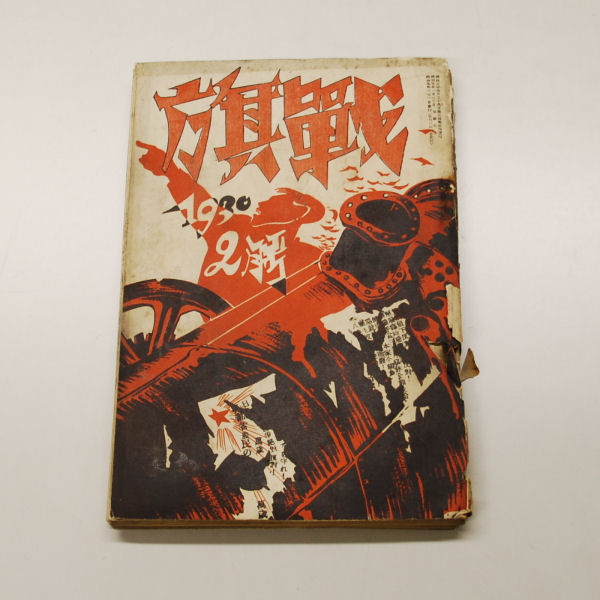Senki on:
[Wikipedia]
[Google]
[Amazon]
 ''Senki'' (戦旗, "Battle Flag") was a Japanese
''Senki'' (戦旗, "Battle Flag") was a Japanese
 ''Senki'' (戦旗, "Battle Flag") was a Japanese
''Senki'' (戦旗, "Battle Flag") was a Japanese proletarian
The proletariat (; ) is the social class of wage-earners, those members of a society whose possession of significant economic value is their labour power (their capacity to work). A member of such a class is a proletarian or a . Marxist philo ...
literary magazine in the late 1920s and early 1930s.
Overview
''Senki'' was a Japanese proletarian literary magazine published between May 1928 and December 1931.Background
In March 1928 the (Esperanto
Esperanto (, ) is the world's most widely spoken Constructed language, constructed international auxiliary language. Created by L. L. Zamenhof in 1887 to be 'the International Language' (), it is intended to be a universal second language for ...
name: Nippona Artista Proleta Federacio, abbreviated NAPF, ナップ) was formed from a merger of the (which was under the direction of the Japan Communist Party
The is a communist party in Japan. Founded in 1922, it is the oldest List of political parties in Japan, political party in the country. It has 250,000 members as of January 2024, making it one of the largest List of communist parties#Modern n ...
) and the . The organization established ''Senki'' as the monthly organ and released its first issue in May of that year.
Publication history
The first issue of ''Senki'' was published in May 1928. In December of the same year, its publisher NAPF was reorganized as the Japan Congress of Proletarian Artists' Organizations (全日本無産者芸術団体協議会 ''Zen-Nihon Musansha Geijutsu Dantai Kyōgikai'', also abbreviated NAPF) and publication of ''Senki'' was taken over by the newly established Senki Company (戦旗社 ''Senki-sha''). The magazine was therefore transformed from the official magazine of NAPF into a general magazine of political education, and in September of the following year the Senki Company became fully independent of NAPF. In November 1931, NAPF was liquidated in the creation of the (Federacio de Proletaj Kultur Organizoj Japanaj, abbreviated KOPF, コップ). Publication of the magazine ceased with the December 1931 issue. Excluding issues that were banned by government censors, 43 issues of ''Senki'' entered print in the magazine's run. Supplements for a youth (''Shōnen Senki'' 少年戦旗) and female audience (''Fujin Senki'' 婦人戦旗) were also published. It suffered strict government censorship, and at the height of its popularity had a circulation of around 23,000.Notable works
Several important works of Japan's proletarian literature movement first saw print in the pages of ''Senki'', including: *'' 1928 nen 3 gatsu 15 nichi'' (November and December 1928) *'' Kani Kōsen'' (May and June 1929) *''Taiyō no nai Machi
Taiyō is the romanization for some Japanese words, such as ''太陽'' for sun and ''大洋'' for ocean. It can also refer to:
Persons
A male Japanese given name
*, Japanese footballer
* Taiyō Kea (born 1975), American professional wrestler
*, J ...
'' (June, July, August, September and November 1929)
Reception and legacy
Reprints of ''Senki'' were published between 1976 and 1977 by the ''Senki'' Reprint Publication Society (戦旗復刻版刊行会 ''Senki Fukkoku-ban Kankō-kai'').References
Works cited
* * *External links
* {{DEFAULTSORT:Senki 1928 establishments in Japan 1931 disestablishments in Japan Defunct literary magazines published in Japan Magazines established in 1928 Magazines disestablished in 1931 Magazines published in Tokyo Proletarian literature Communist magazines